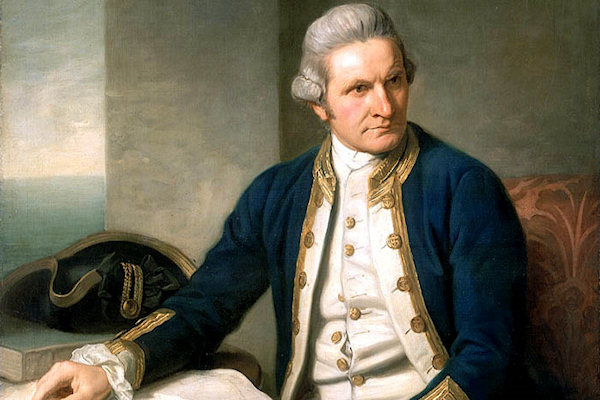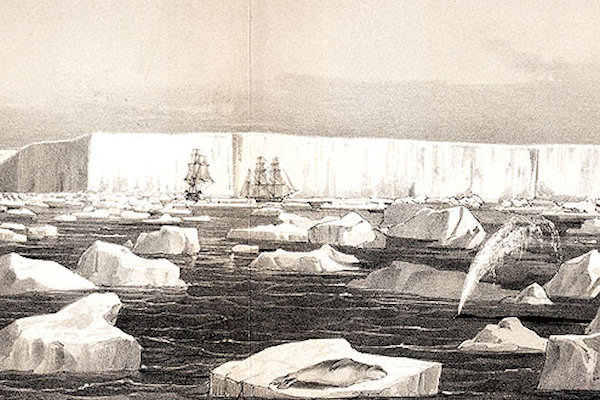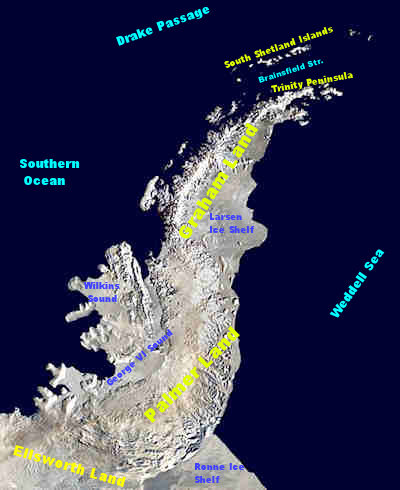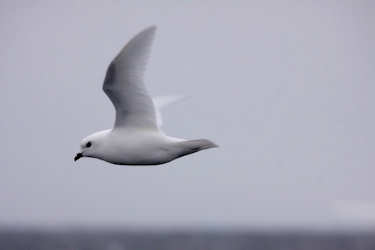Antarctic Peninsula

Discovering Antarctia
 |
|||||
Belief in the existence of a Terra Australis – a vast continent in the far south of the globe
to "balance" the northern lands of Europe, Asia and North Africa – has existed since the times of
Ptolemy (1st century AD), who suggested the idea to preserve the symmetry of all known landmasses
in the world.
European maps continued to show this hypothetical land until Captain James Cook's ships,
HMS Resolution and Adventure, crossed the Antarctic Circle on 17 January 1773, in
December 1773 and again in January 1774. Cook in fact came within about 75 miles (121 km) of the
Antarctic coast before retreating in the face of field ice in January 1773.
The first person who set foot on Antarctica is said to be the American John Davis, a sealer,
who landed there on 7 February 1821.
James Weddell made three voyages to the Antarctic between 1821 and 1824, in his brig, the
Jane, exploring South Georgia, the South Shetland and the South Orkney Islands , and the ice
around Antarctica. On his third voyage, he sailed down into what is now the Weddell Sea, achieving
a southern latitude of 74° 15’ on February 20, 1823, a record that would not be surpassed for almost
eighteen years.
In 1840, Charles Wilkes, leader of an American Navy expedition, was the first to cross a
substantial swath of land and realize that the new island was a continent rather than just a large
island.
 |
|||||
The British were beaten out of the starting gate by both the French and the Americans, but they recovered
quickly, and by 1839 they had their own expedition ready to seek the south magnetic pole. The ships were
the Erebus and Terror, and the commander, fittingly, was James Clark Ross, who had
discovered the north magnetic pole in 1831. The sturdy ships managed to penetrate a very dense ice pack,
and in January 1841, Ross sighted land, which he called Victoria Land, a part of Antarctica that
lies along what is now the Ross Sea. He was surprised to see a volcano on an island in active
eruption. He named the active volcano Mt. Erebus. But the greatest surprise of all was the
discovery of a stupendous ice sheet, nearly 200 feet high and extending for hundreds of miles. This was
the Ross Ice Shelf, the largest floating ice sheet in the world.
Ernest Shackleton, led the Nimrod-expedition (1907 - 1909), in an effort to be the first to reach
the South Pole, and was only 180 km away before they had to turn back. Parties from that expedition were
the first to discover the Magnetic South Pole, however.
After the magnetic south was discovered, the competition really got intense. Robert Falcon Scott,
the Brit, and Roald Amundsen, from Norway, sailed their ships Terra Nova and Fram
in an effort to be the first to the South Pole. Their expeditions took place throughout the year 1911 and
early 1912. Roald Amundsen's party was first, reaching the South Pole on 14 December 1911. Their strategy
involved taking 52 dogs with them and feeding the dogs to the others as they died. They returned with only
11, as this is how these expeditions were done in those days. Robert Scott reached the South Pole only a
month later, but his party of five perished on the return trip across the Ross Ice Shelf. Today the
Scott-Admundsen South Pole Station is named in honor of the two men.
Antarctic Peninsula

The Antarctic Peninsula is the northernmost part of the mainland of Antarctica, lying North off Ellssworth
Land and containing Graham Land in the North and Palmer Land in the South.
As, beeing the mildest and most accessible part of the continent, the Peninsula gets tens of thousands of
people every year; a;most half of them visit the very sampe places. Ship captains and expedition leaders
instinctivel reach for these favorite dozen sites because they are known safe anchorages offering convenient
acces to penguin rookeries, research stations or historic sites, all within a manageable distance of one
another.
The first sighting of Antarctic Peninsula is disputed but apparently occurred in 1820. The most likely first
sighting of the Antarctic mainland, was probably during an expedition of the Russian Imperial Navy that was
captained by Thaddeus von Bellinghausen. The party did not recognise - what they thought was an icefield
covered by small hillocks - as the mainland on 27 January 1820.
Edward Bransfield and William Smith were the first to chart a part of the Antarctic Peninsula
- just three days later - on the 30 January 1820. The location was later to be called Trinity Peninsula,
the extreme northeast portion of the peninsula.
The next confirmed sighting was by John Biscoe who named the northern part of the Antarctic Peninsula,
Graham Land, in 1832.
The first to make landing on the continent is also disputed. A 19th century seal hunter called John
Davis was almost certainly the first, however sealers were secretive about their movements and their ship
logs were deliberately unreliable, in order to protect any new sealing grounds from competition.
Between 1901 and 1904, Otto Nordenskiöld led the Swedish Antarctic Expedition, one of the first
expeditions that was to explore parts of Antarctica. They landed on the Antarctic Peninsula in February 1902,
aboard the Antarctica which later sank not far from the Peninsula with all crew saved.
The British Graham Land Expedition between 1934 and 1937 carried out aerial surveys and concluded that
Graham Land was not an archipelago but was a Peninsula.
I visited the Antarctic Peninsula in april 2011.
It was part of the Atlantic Odessey
Please let me know when you're having questions.
i would be pleased to help you.
Things to do and other tips
